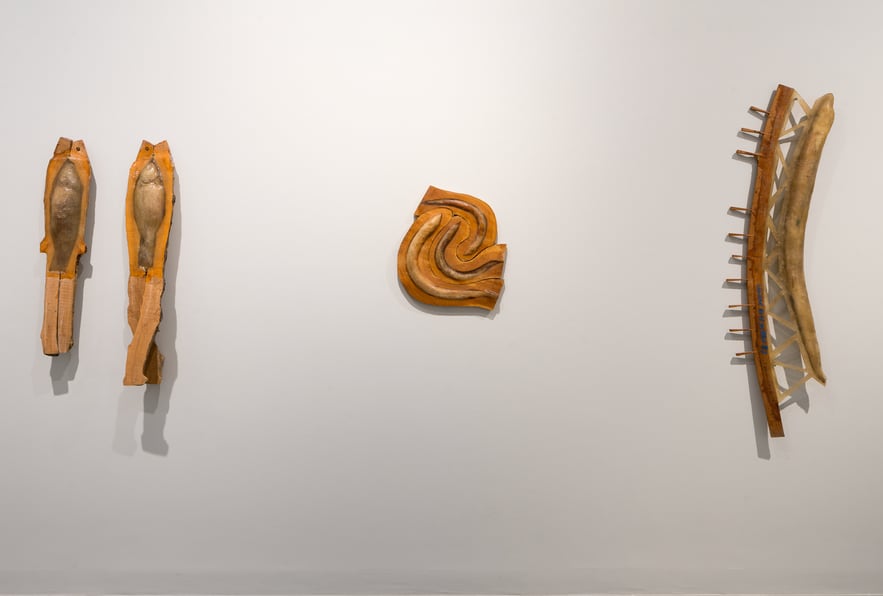A crisis of representation. This is what led Toni Grand to build minimal and singular statuary. “Following the Paris school, the question was how to make a radically new painting and sculpture. We had to start from scratch,” summed up the taciturn Camargue resident during one of his rare interviews given to the press. The works of the artist, who died in 2005 at the age of 70 and celebrated internationally during his lifetime, have been discreet on the walls in recent decades. A tribute to the MAC in Marseille in 2007 and a major exhibition in Geneva more than ten years ago, that’s all. Suffice to say that the retrospective devoted to him today by the Fabre museum in Montpellier, until May 5, has the appearance of a resurrection. Nearly 80 pieces are spread over 850 square meters in an airy layout which gives space to large formats.
We readily Americanized the sculptor. For his first name, sometimes falsely weighted with a y – in fact, Toni is only the diminutive of Antoine, who, all his life, remained faithful to his native South. This son of a farmer from Gard, who goes to school on horseback every morning, began tinkering with wood and iron as a teenager. A qualified master shepherd, he briefly attended the Beaux-Arts in Montpellier, returning traumatized from his military service in Algeria where he was assigned to commandos practicing torture, before training in Paris in the workshop of the Hungarian sculptor Marta Bang. From 1967, at the Paris Biennale, the Specimens – abstract shapes in resin – by Toni Grand challenge.
“Untitled, 07.20.88”, 1988 (wood, eels and polyester resin).
/ © Patrice Mautin-Berthier © ADAGP, Paris, 2024
Then came the discovery of the work of minimalists from across the Atlantic at the Grand Palais and his meeting, in Nice, with the members of Supports-Surfaces. From the American movement as from the French group the sculptor will be lastingly marked, even if his universe retains its own identity: “The beauty of simple materials, with strange shapes and poor gestures, is part of an approach which combats any spectacular temptation”, underline curators Olivier Kaeppelin and Maud Marron-Wojewodzki.
Parallel splitting, peeling, squaring, twisting, gluing… The artist is a virtuoso of wood. From scraps collected near his farmhouse, he creates curved lines of great sensuality, whose economy of means and refined character mask the technical complexity. Later, he explored new materials: laminated polyester, which we found molded into his double columns of tree trunks in the French pavilion at the 1982 Venice Biennale; resin, which, mixed with wood, creates contrasting shapes between opacity and transparency; the stone, the bone, like the Major horse which refers to Duchamp-Villon’s sculpture from 1914 and which Toni Grand fashioned from the exhumed skeleton of her own mount, and… the fish, thus combining the organic and the artificial, the living and the synthetic.

View of the exhibition “Toni Grand, pieces of a possible thing”. On the right. : “The Reparation” (1974-1987).
/ © Fabre Museum of Montpellier Méditerranée Métropole / Frédéric Jaulmes
To these eels, conger eels and more rarely carp, supplied by a local fisherman, he refuses any symbolic reference: “These are pieces of the world. It’s another part of the real world that is summoned,” he said. As evidenced by the emblematic Repairmade of wood in 1974, then broken and repaired, thirteen years later, using an eel dressing coated in resin and fiberglass which perfectly matches the curvature of the wood.
Exposure “Toni Grand, Pieces of a Possible Thing”at the Fabre museum, in Montpellier, until May 5, 2024.
.
